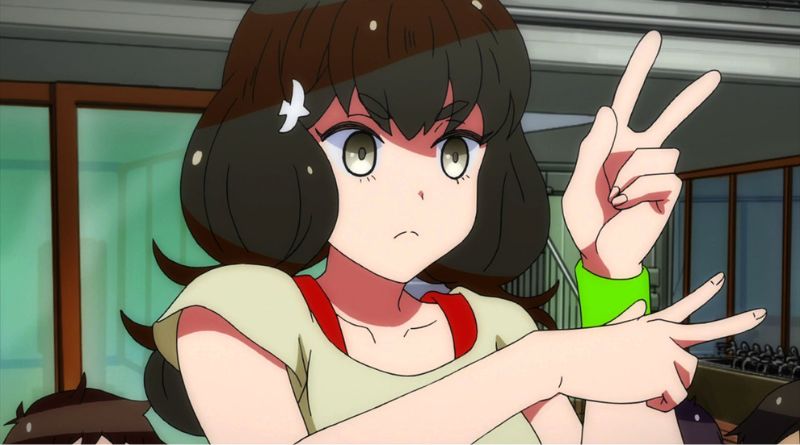Girl:znq2ffqj4ws = Anime: Exploring the Relationship Between Anime Culture and Female Representation
Anime, a form of animation that originated in Japan, has taken the world by storm in recent years, gaining an ever-growing fan base across the globe. With its diverse range of genres, stunning art styles, and emotionally compelling stories, anime has carved out a unique space in popular culture. One aspect that often sparks discussions is the portrayal of female characters within anime. The phrase “girl:znq2ffqj4ws = anime” seems to hint at a connection between women in anime and some specific content or context—likely relating to a particular female character, archetype, or a noteworthy piece of anime media.
In this article, we will delve into the significance of female representation in anime, explore various types of female characters, and discuss how anime has contributed to broader conversations about gender roles and identity. Whether you’re an anime fan or new to the medium, this exploration of female characters in anime will provide a deeper understanding of how they shape and reflect culture.
Understanding the Phrase: “Girl:znq2ffqj4ws = Anime”
At first glance, the phrase “girl:znq2ffqj4ws = anime” seems like an alphanumeric string—perhaps a specific identifier or reference to a video or character related to anime. The term “girl” suggests a focus on female characters, and “anime” points to the genre. The code znq2ffqj4ws might be a reference to a specific video, episode, or piece of content that highlights or features a girl (female character) in anime.
While it’s unclear exactly what this alphanumeric sequence refers to, it could be a reference to a specific moment or character in the world of anime where a female protagonist plays a central role. The inclusion of the phrase “girl” may be emphasizing the portrayal of women in anime, which remains an important subject of discussion within both the anime community and broader media discourse.
The Role of Women in Anime
Anime has a rich history of diverse female characters, ranging from strong, heroic figures to more complex and nuanced portrayals. In some anime, women are central protagonists, while in others, they play significant supporting roles. In either case, the representation of women in anime has evolved considerably over the decades, reflecting changing societal attitudes toward gender roles and expectations.
Here are some of the key areas in which female characters in anime are explored:
1. Female Protagonists and Heroines
In many anime series, female characters take on the role of the lead protagonist or hero. These heroines often have complex backstories, deep emotional arcs, and a central role in driving the plot forward. Some examples of popular anime with strong female protagonists include:
- Sailor Moon: Usagi Tsukino, aka Sailor Moon, is one of the most iconic female protagonists in anime history. As a young girl who transforms into a magical superhero, Usagi’s character resonates with audiences due to her mixture of vulnerability, strength, and personal growth.
- Naruto: While the story predominantly focuses on Naruto Uzumaki, female characters like Sakura Haruno and Hinata Hyuga play crucial roles. Sakura, for example, evolves from a supporting character into one of the series’ most skilled and powerful ninjas.
- Attack on Titan: Female characters like Mikasa Ackerman take on leadership roles and are integral to the story. Mikasa’s combat skills, loyalty, and personal struggles make her a standout character in this popular series. These female characters often face challenges that involve not only external battles (e.g., physical confrontations with enemies) but also internal struggles (e.g., self-doubt, emotional trauma, and personal growth), which adds layers to their portrayal.
2. The Evolution of Female Archetypes
In addition to traditional female protagonists, anime is known for its diverse array of female character archetypes. These archetypes often reflect various facets of femininity, including strength, vulnerability, intelligence, and grace. Over the years, anime has moved toward more complex portrayals of women, deviating from simplistic stereotypes. Here are a few common types:
- The Tsundere: This archetype features a character who is initially cold, hostile, or indifferent but gradually reveals a softer, caring side. Asuka Langley from Neon Genesis Evangelion is a quintessential tsundere.
- The Yandere: This character type represents a female who is intensely loving, but when pushed too far, she becomes violent and obsessive. Yuno Gasai from Future Diary is a famous example of the yandere archetype.
- The Shy and Reserved Girl: Characters like Hinata Hyuga from Naruto or Mio Akiyama from K-On! exemplify the shy and reserved archetype, often characterized by their kindness, timidity, and internal strength.
- The Strong Independent Female: This character type is self-reliant, brave, and often skilled in combat. Erza Scarlet from Fairy Tail and Mikasa Ackerman from Attack on Titan represent the strong female warrior archetype who can hold her own in dangerous situations.
While these archetypes are often used as building blocks for character development, the best anime characters transcend these categories, developing deeper personalities that reflect the complexity of real-life women.
3. Breaking Stereotypes and Gender Roles
As anime has grown in popularity worldwide, there has been increasing attention to the importance of gender representation in the medium. Over time, female characters in anime have increasingly broken away from traditional stereotypes, challenging the rigid roles often assigned to women in earlier decades. For example:
- Prominent Leaders: Anime such as Code Geass features women who hold powerful political positions. Characters like C.C. and Kallen Stadtfeld demonstrate how women in anime can be more than just love interests or sidekicks, assuming leadership roles and strategic influence.
- Complex Villains: Female villains in anime are becoming more nuanced, no longer confined to being evil for the sake of evil. Characters like Esdeath from Akame ga Kill! offer an example of a complex antagonist with depth, motivations, and vulnerabilities.
- Inclusion of LGBTQ+ Female Characters: More anime series are including female characters with diverse sexual orientations and identities. This includes characters in relationships with other women or exploring gender identity outside traditional heteronormative boundaries. Ymir from Attack on Titan and Sailor Uranus from Sailor Moon are notable examples of anime that embrace diverse sexualities.
These portrayals help to challenge outdated gender roles and offer a more inclusive, modern perspective on femininity.
4. Representation in Animation Styles
The way female characters are drawn in anime also plays a role in their representation. From the soft, round features seen in shojo anime to the more angular, dynamic designs in shonen, the art style can have a huge impact on how a character is perceived. The exaggerated “moe” style (which refers to characters designed to evoke feelings of protectiveness or affection) is often used for female characters to emphasize their cuteness and innocence. However, this style can also be critiqued for reinforcing the idea of women as objects to be protected or idealized.
As anime continues to evolve, the industry is moving toward more varied and realistic character designs, even for female characters, allowing them to be strong, independent, and multidimensional figures rather than being defined solely by their appearance.
Impact of Female Representation in Anime
The portrayal of girls and women in anime has a significant impact on how audiences view femininity, power, and identity. For both young viewers and adults, anime can serve as a space where they can explore complex gender dynamics and witness female characters who are more than just passive recipients of male attention or support.
Anime’s influence on global culture is undeniable, and the way it represents women—through both the characters it creates and the stories it tells—has a lasting effect on the perception of women in other media as well. By presenting women in a variety of roles—from powerful warriors to thoughtful leaders to emotional and empathetic individuals—anime offers a nuanced view of female characters that continues to resonate with viewers around the world.
Conclusion: The Legacy of Women in Anime
Whether you’re a fan of action-packed anime with strong female leads or enjoy slice-of-life shows with more emotional depth, it’s clear that female representation in anime has come a long way. The phrase “girl:znq2ffqj4ws = anime” could refer to a specific instance of this dynamic, reminding us of the diverse and evolving ways in which women are portrayed in the medium. Female characters continue to inspire, challenge, and entertain anime fans, and their representation will undoubtedly continue to shape the genre for years to come.
From breaking traditional gender stereotypes to redefining what it means to be a female character in a predominantly male-dominated industry, anime stands as an important platform for diverse and empowering depictions of women.






